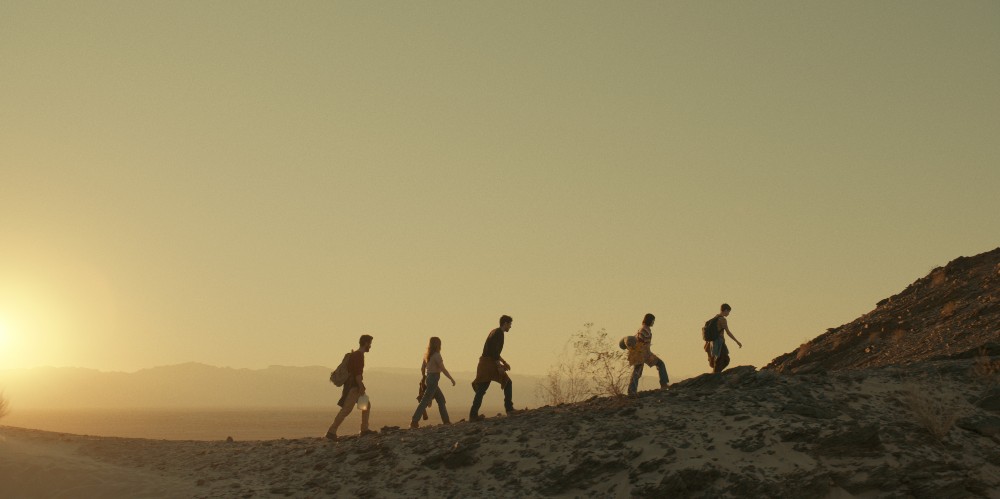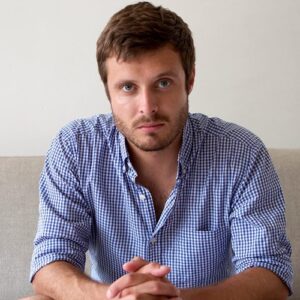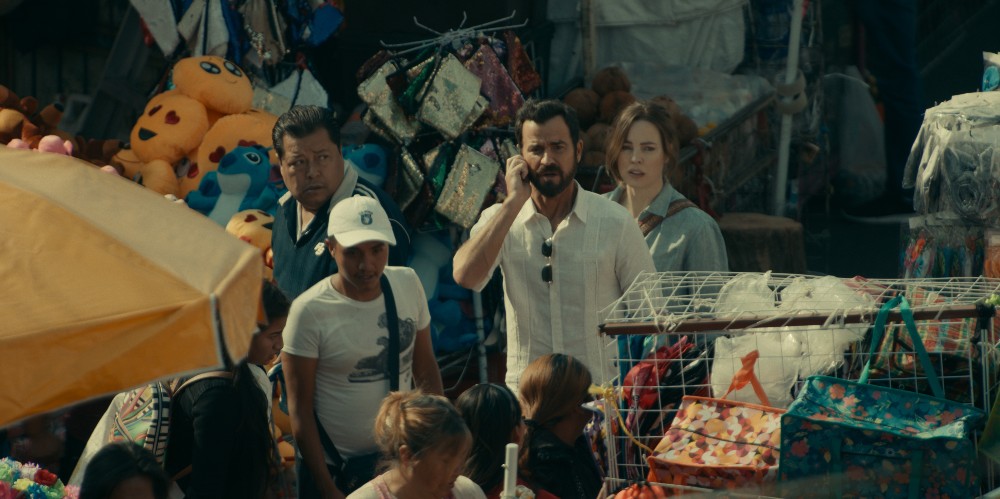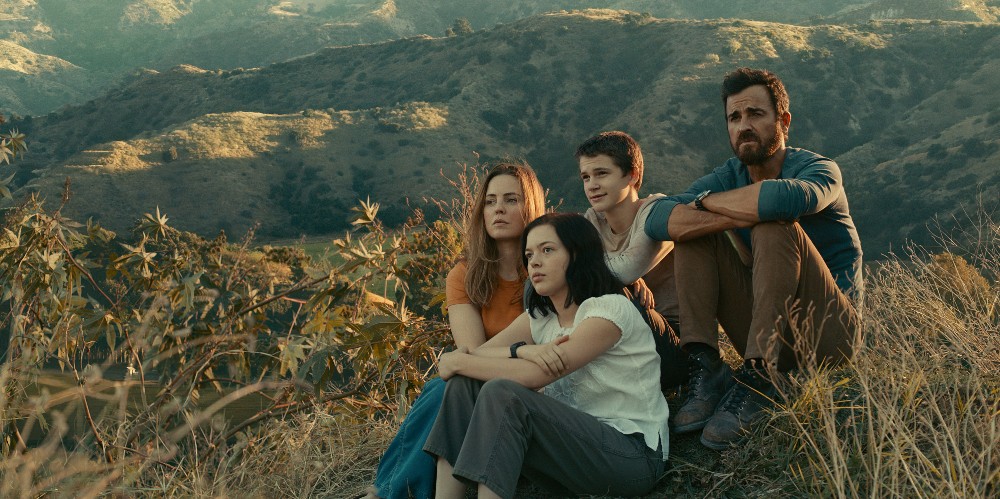
The Mosquito Coast is created and developed by Tom Bissell and Neil Cross, based on the 1981 novel from author Paul Theroux and a previous adaptation of the 1986 film. The new Apple TV+ series transports us into the chaotic world of Allie Fox (Justin Theroux) with wife Margot (Melissa George), daughter Dina (Logan Polish), and son Charlie (Gabriel Bateman) who are abruptly forced to run for their lives and flee the country as they head down south of the border. Cinematographer Alex Disenhof (Watchmen, The Exorcist) was brought in to determine the style and look for the gripping series.
The inspiration for the look of the series embraces a visual arc that transforms throughout, as Disenhof explained to Below the Line, “We didn’t really look at the novel or the movie in terms of establishing the world that we wanted to create. I had set a look book through the whole season. We wanted this certain American look. Rupert Wyatt was the director of the first two episodes that I did. He wanted to set up a world in which we meet a family at their home that’s warm, lived in, and welcoming in a place that we feel bad that they have to leave as an audience member. We wanted to establish a heightened sense of what America is right now when they left their homestead and what Allie’s worldview of America is. I looked at films like Paris, Texas that Robby Müller shot for Wim Wenders as a really great reference for the Stockton, California look; the colors at night with the reds and the greens. It’s a fading American color palette; nowadays, we have all these white LEDs and very clean looking city streets. Not too long ago, we had the green fluorescence and the orange sodium lights. I wanted to show the audience a visualization of Allie’s perspective of the world. It’s a bit grimier when he goes to these certain places, we wanted them to feel rugged and worn out. It’s bleaching out into this harsh and dry look as we go through the desert journey. Then more colorful work, inspired by Alex Webb’s photography in Mexico City, finally reaching this lush jungle, supposed paradise. Once COVID happened, we went from nine to seven episodes. Things morphed a little bit along the way in terms of the look. The idea from the outset was to establish an arc to the visuals.”

The style of the camera is determined within the first two episodes. “We wanted to establish the world and the style of the camera work in the first two episodes. One thing that was really important was to keep the camera moving and have some momentum behind it as if we’re following the characters as they move from space to space. We wanted the camera to be its own character in many ways. It starts out right away in Episode 1 with the camera traveling through this device that Allie’s created. Then these long shots that are sweeping around, seeing the landscape, the house, and all these different things that we wanted to establish with the camera that mimicked the momentum of our characters,” the cinematographer detailed.
The director of photography added, “We used a lot of technocrane, dolly, and Steadicam. We had two shots in the first episode when Margot and Charlie are grabbing their backpacks in the living room, running out of the house, and then to the car — that was a technocrane on a magnetic release system. As it hit a certain point, we released the magnets, the grips took the camera on a Ronin and ran with the camera after our people, so it was this long-interconnected shot. In the homeless encampment, we also crane with Allie and Dina as they are entering. We track with them, see them between the pillars, see the homeless people, we boom up and follow them all upstairs, boom back down, push in, and reveal this big open space with all these homeless people. The camera again is handed off from the crane to two grips who then carry it the rest of the way to reveal our characters again back up on this awning. There was a lot of fun camera trickery that we got to play with and always finding surprising ways to follow our characters.”
The lighting utilizes natural light. “I used a lot of hard sunlight coming through the windows, warming it up, and feeling a bit like it’s a well lifted family space. Then shifting over to the night work which is much harsher, I tried to keep color in and wanted it to be colorful. I mixed a lot of color temperatures, went really dark, pushed the greens, the oranges, the griminess of the city streets, and reflecting Allie’s worldview of society seeing the homeless encampment in Episode 2. It’s a bit of an elevated reality, it’s a visual embodiment of broken consumerism,” the cinematographer illuminated.
The point of view shifts between all the characters through different lenses. Disenhof revealed, “That’s the one of the most important things in the storytelling of the show and what makes it interesting. Allie is a character who is very complicated and makes a lot of bad decisions that he justifies as right because that’s his worldview. The collateral damage that occurs to the members of his family is what’s interesting in many ways. What do we see when we have two teenagers who are now experiencing horrific things, they see somebody die, and they have to leave their home as children with no real explanation? That’s where the conflict in interest comes in the family dynamic. It’s really important to start to shift the perspective away from Allie, but explore how the family reacts and changes. In Margot and Allie’s relationship, what it means between them and their divergent outlooks on the world and what they should do for their children, these two kids trying to grow up in a world that makes no sense to them, because their father has dragged them along in this insane journey. Visually, we weren’t scared to change perspective, it was important to do so. If it was only the Allie show, Allie is arguably unlikable, even though he is very much charismatic and watchable, but he makes a lot of decisions that put his family at risk. Margot and the kids, in a way, represents the audience — they let us imagine what we would do if we were put in these situations.”
The tension escalates with the slow build anticipation in combination with the action beats. “Rupert is a master at creating tension. He really knows how to use not just visuals, but sound and timing of the edit to create tension. The first two episodes are a lot of mood and tension building, but at the same time, Rupert allowed us to get shots of the environment or the atmosphere. There’s a scene where Margot is in the yard gardening and we just see the wind blowing through the trees and the little garden trinkets. We know as an audience that something’s going on because we’ve been with Allie and we understand that he and his son have been tailed by this mysterious black car. We’re letting the audience stew on it a little bit. We’re not just cutting right to the meat of it, slowing it down, and letting everyone marinate in that tension. It was important to always look for moments that weren’t necessarily purely action beats. It was also about sitting with our characters, getting nice big vistas, seeing the landscape that they’re living in, and the things that happen. The whole scene at the end of Episode 2 is really about tension with this big shoot out in the desert. We literally don’t show the actual event. Rupert was very clear on wanting to cut really wide to a huge wide drone shot just hearing the gunshots go off. We see the pop of the first gun and then we cut out wide, but the whole scene leading up to it is about five minutes. It is really just tension building between characters who are sitting in this car, border patrol guys who are questioning them, and then there’s this whole buildup of they’re going to get caught. The most important thing that’s going to keep the audience engaged isn’t the guns firing, it’s the ratcheting up of the tension before the guns fire,” the cinematographer stressed.

The series links multiple layers together into an interconnected complicated story. “It’s interesting, because I was involved in setting up the whole show, so I knew what was coming. It did change because of COVID, they had to cut things down because of the reduction of episodes. There’s some amazing backstory that they’ve pushed to later, which I was hoping would be in Season 1. We always knew that the story would keep expanding because it really had to. In order to tell why they’re on the run, we have to start adding layers to look at who’s chasing them. We still don’t know why they’re being chased, but we get hints along the way. There was a level of, ‘How do we keep the viewers interested in this journey?’ It was this expansion of the world, seeing these different perspectives, and many people caught up in the web of Allie and Margot’s past whatever they’ve done. Realizing that their journey to their Promised Land is not going to be as easy as Allie thought it would be,” the director of photography clarified.
Everything was shot on location, which conveys a certain level of authenticity and realism to the show. Disenhof defined, “The biggest challenge on this show is that we always shoot on locations, which is also the best thing about all of our shows. We are both firm believers in shooting real places because they give us limitations and they also inspire new ideas. There’s something about the real thing that just cannot be replicated on stage, the energy on set is different. The house and a lot of the America Stockton was in Fillmore and other places around LA. The huge junkyard scenes and a lot of the driving was done in Mexicali, where we literally had to walk over the border for border crossings. Episode 3 was in Mexicali as well. Then Episode 4 was in a place called Puebla in Mexico, which is this beautiful historic town at this 500-year-old hacienda and then the rest of it was in and around Mexico City. The show wouldn’t look the way it does if we were building the sets and putting it on stage.”
Cinematographer Alex Disenhof presents Mosquito Coast with a particular look and a fluid moving camera style. The perspective starts on Allie and then shifts over to the family members. Tension escalates through the slow build up mixed with action beats. The actual locations exhibit a level of authenticity and believability within the series.
“I’m proud of the storytelling that we did with the first two episodes, specifically in the sense of visualizing the story and the perspective of Allie’s world view. We had our vision for what we wanted from the very beginning. We were after a very specific look and way of moving the camera that isn’t the typical television show.”
The first season of The Mosquito Coast can be viewed streaming on Apple TV+. All photos courtesy of Apple.






